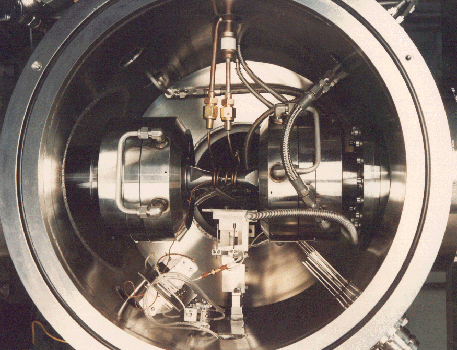 |
|||||
| Home | Research | For Teachers | HISTORY Level 1 Level 2 Level 3 |
PRINCIPLES Level 1 Level 2 Level 3 |
CAREER Level 1 Level 2 Level 3 |
| Gallery | Hot Links | What's New! | |||
| Web Administration and Tools | |||||
 |
|||||
| Home | Research | For Teachers | HISTORY Level 1 Level 2 Level 3 |
PRINCIPLES Level 1 Level 2 Level 3 |
CAREER Level 1 Level 2 Level 3 |
| Gallery | Hot Links | What's New! | |||
| Web Administration and Tools | |||||
![]()
A major obstacle in improving the performance and durability of gas turbine engines is the cyclic durability of the materials used, especially those subjected to high temperature. Until more advanced materials reach commercial availability, most of the components in the hottest sections of the engine will be made from nickel-base and cobalt-base, oxidation, creep, and fatigue damage resistant materials, known collectively as superalloys. The continuing requirements of higher efficiency, lower hydrocarbon emissions, and lower weight, force the operating temperatures and the imposed stresses upward. Army/NASA Lewis research is focused on improving both the performance of the alloys and providing methodologies to more accurately estimate service life under a wide variety of operating conditions. These efforts are coordinated with industry and other government agencies, such as the Army's Materials Technology Directorate and the Air Force Materials Laboratory. Progress in these areas has led to significant increases in power-to-weight ratios in gas turbine engines.
The practice of designing components to a finite life requires accurate estimates of both the mean and distribution of the fatigue life for a credible prediction of component reliability. In addition, there is a movement in both the industry and government toward a different design philosophy: "Retirement For Cause" or RFC. Under RFC, parts are retired when they show signs of damage, not when a life limit has been exceeded. This methodology requires accurate estimates of the crack propagation behavior so that safe inspection intervals can be set. This methodology can lead to large cost savings and enhanced reliability. The Army and NASA are directly supporting this effort.
POC: Peter J. Bonacuse

Loading fixture for assessing the durability of
materials under simulated gas turbine conditions
![]()
Send all comments to ![]() aeromaster@eng.fiu.edu
aeromaster@eng.fiu.edu
© 1995-98 ALLSTAR Network. All rights reserved worldwide.
Updated: February 17, 1999